We love large displays. Whether it is a home TV, a PC monitor, or a theatre screen, the feeling of watching movies or videos on a big screen is truly magical. A larger screen helps to deliver content and convey messages more effectively. Many businesses understand that a large screen attracts viewers. As a result, when traditional billboards and signages are hard to get attention nowadays, more and more businesses turn to using digital displays.
The two most common large-screen displays in the market are LED screens and video walls. Both of them are widely used in various applications such as retail advertising, exhibitions, trade shows, and conferences. However, thanks to the fast-evolving display technology for the past few years, as a newcomer to the market, LED screen is getting better and better in almost every aspect. Businesses start to question, whether an LED screen is a better option than a video wall.
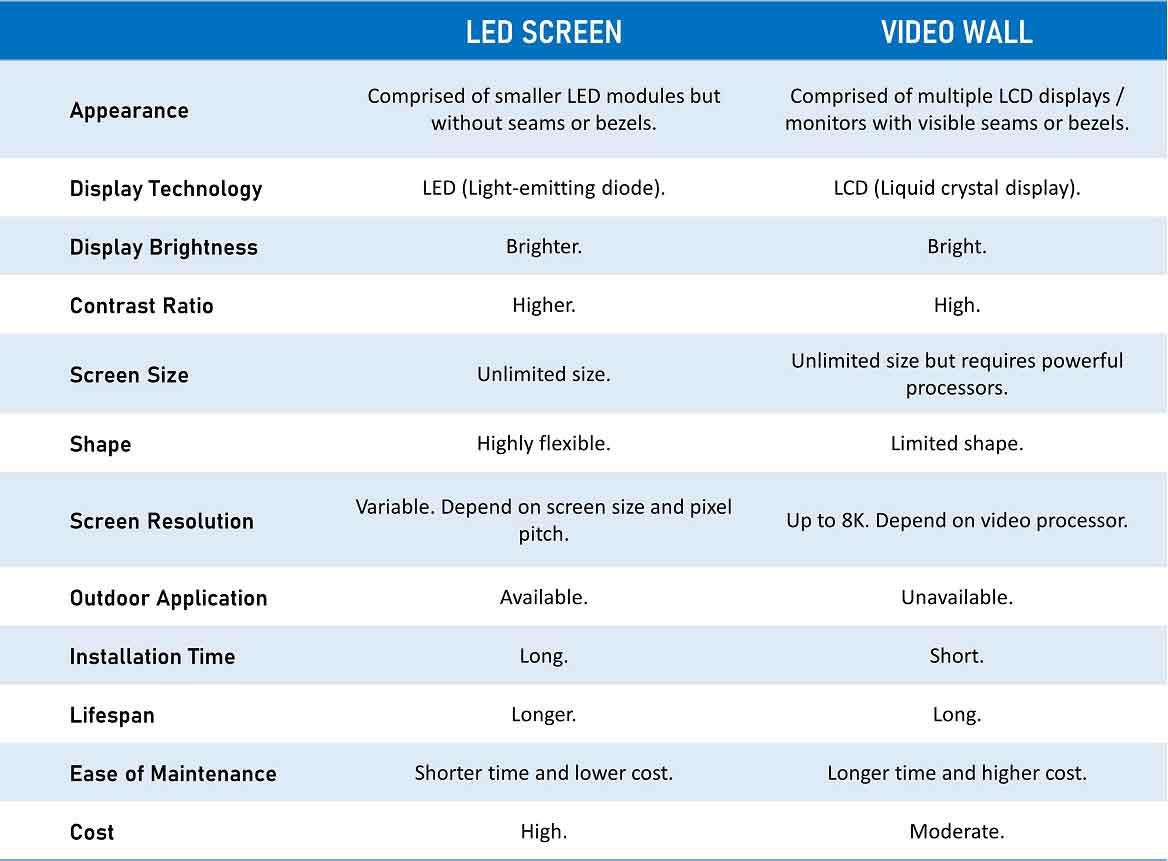
1. What is a Video Wall?
Before we dive deeper, you need to understand what exactly a video wall and an LED screen are. A video wall is not exactly an out-of-box product. It is a customized multi-screen setup that resembles a large screen by combining or tiling multiple smaller LCD screens or monitors together.
For example, when a 55-inch LCD display is not large enough to meet your need, instead of buying a heavy and bulky 110-inch display, you can also tile four 55-inch displays together to form a larger screen (110-inch screen size).
In addition to the multiple smaller displays, the setup also needs a video wall processor. It is used to control what content is shown and how it is displayed. From different content on different displays to full-screen content that is stretched across all displays, the processor is crucial for the users to manage the content in real-time.

2. What is an LED Screen?
LED screen is a direct-view display that is built by using multiple LED modules or panels. Unlike video wall which has a covered front glass on each display, there are only a large amount of LEDs or light-emitting diodes on each LED panel. Light-emitting diode emits light when electric current flows through it.
Appearance-wise, the seams between LED modules are generally invisible. On the other hand, obvious bezels can be found on a video wall.
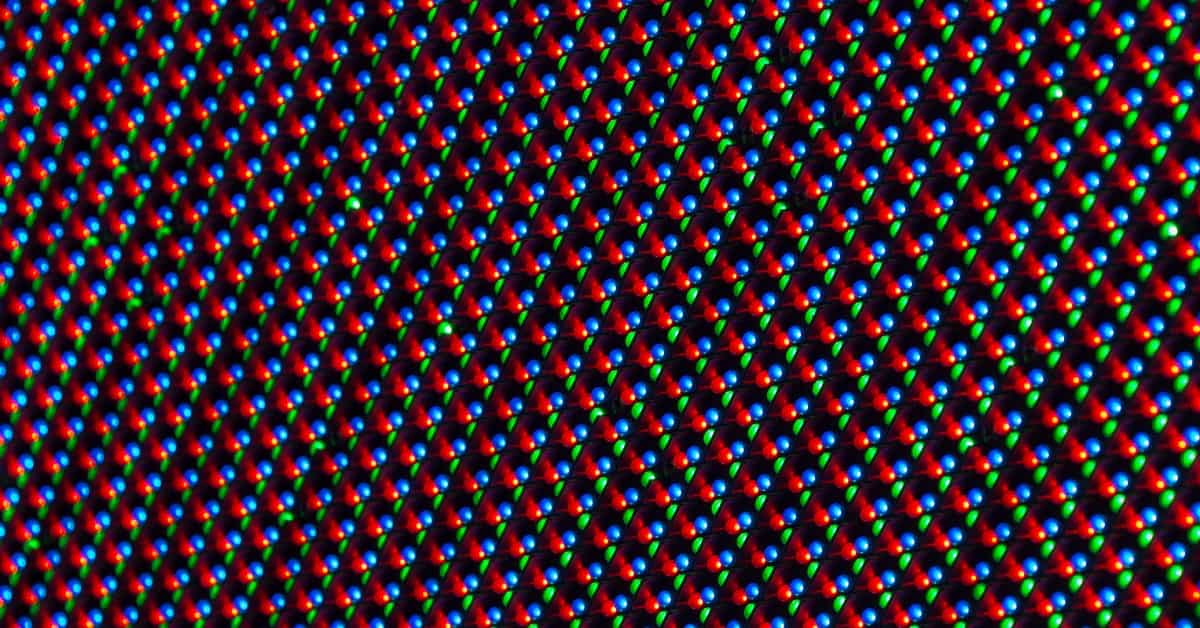
3. Display Technology
Video walls and LED screens utilize different display technologies. It is the most important area to talk about as most pros and cons of these displays are generally determined by the underlying technologies.
Video wall uses LCD technology while LED screen uses LED technology.
LCD or liquid crystal display is a technology that uses a layer of liquid crystal material that is sandwiched between two electrodes on glass substrates. Since it cannot emit light on its own, it needs a backlight. LCDs are commonly used in home TVs, computer monitors, and digital signages. It was introduced many decades ago to replace CRT displays that are thicker and bulkier.
On the other hand, LED technology uses light-emitting diodes that can emit light on their own. Since LED technology is not relying on any backlight, it can achieve a perfect black level by simply turning itself off. As a result, LED can produce images with a greater contrast ratio.
In terms of display brightness, the LED screen is also a clear winner. It has a higher nit value than an LCD screen. A nit is a measurement unit that is used to represent the brightness of the light.
In a nutshell, LED screen beats video wall in almost every aspect of visual quality. Whether it is the black level, brightness, colour accuracy, and contrast ratio, the video wall is clearly not a match.

4. Size & Shape
Technically, there are no size limitations for both LED screens and video walls. However, there are other factors that you need to consider if you want to go for an ultra-large screen. These factors include the weight load of the wall or installation structure, budget, project deadline, and the performance of the video processor.
For video wall, the larger the screen size, the higher the number of displays. When you want to display a synchronized and full-screen picture spanning across all displays on a video wall, you will need a very powerful video processor.
On the other hand, LED screen provides more flexibility in terms of shape. It is easier to have a customized shape due to the smaller size of LED modules. Besides, LED modules of various shapes such as triangle, rectangle and square are available in the market. There are also bendable LED modules that can help to create spherical and cylindrical shapes.
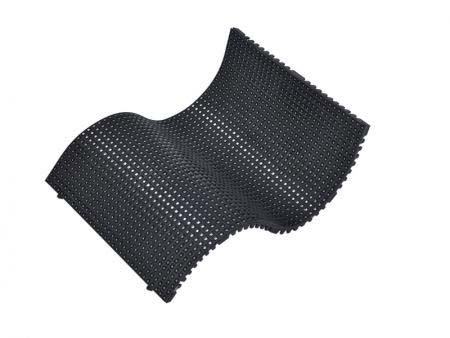

5. Screen Resolution
The screen resolution of an LED screen is greatly related to its pixel pitch, viewing distance, and screen size. In addition to common screen resolutions such as Full HD and 4K Ultra HD, it is possible to have any screen resolution for an LED screen.
For example, let’s say you want to build an LED screen with a size of 4.8 x 2.7 meters. If you are using the P2.5 LED modules, you can get the Full HD resolution. However, if you use the P2 LED modules, you will get an uncommon screen resolution of 2,400 x 1,350 pixels.
For video wall, the screen resolution is greatly related to its video processor and the screen resolution of the LCD displays involved. Most video wall processors in the market support only common resolutions such as Full HD, 4K UHD, and 8K. To get a screen resolution up to 4K or 8K, you will need to invest in a powerful and expensive video wall processor.
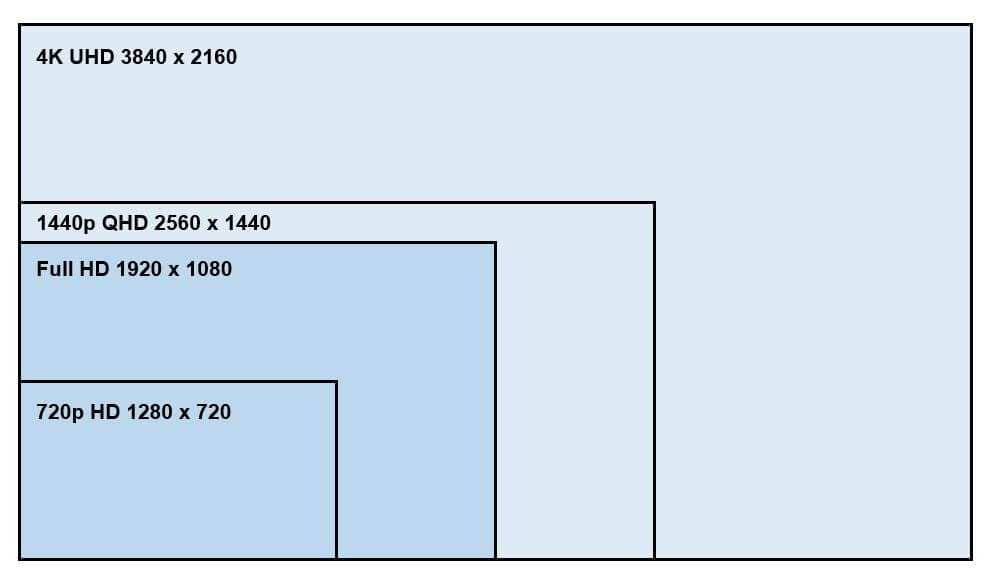
6. Outdoor Application
Video wall is strictly for indoor application only.
LED screens can be used in both indoor and outdoor applications. An outdoor LED screen is normally built by using multiple IP-rated LED cabinets. These weatherproof LED cabinets provide extra protection to all electronic components within the LED panel. In terms of display brightness, an outdoor LED screen is brighter to ensure high screen readability during the daytime.
7. Installation Time
Installation for both LED screens and video walls follows a simple principle. The larger the screen, the longer the installation time takes. However, when a comparison is made, it is obvious that the time to install an LED screen is a lot longer than a video wall installation.
An LED screen installation involves multiple processes that need to be carried out carefully. The traditional approach involves both installations of LED modules and the frame. The frame is a specially designed structure that holds the entire LED screen. It needs to be installed first before the power supply, sending cards, and LED modules can be installed.
During the installation of LED modules, the flatness of the screen has to be monitored carefully. Uneven screen surface is intolerant. Besides, all LED modules have to be aligned and fitted on the plane without any gaps. The fact that there are more LED modules compared to the number of LCD displays on a video wall is one of the reasons why it takes longer time to install an LED screen. During the process, the configuration also has to be tested several times to make sure there are not any operation errors.
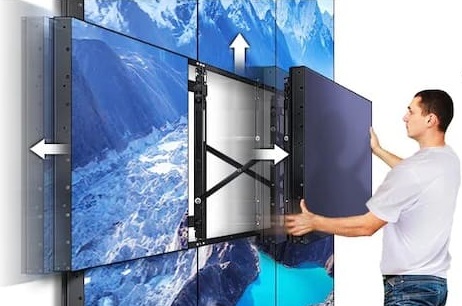
When it comes to lifespan, the answer is straightforward. The lifespan of a well-maintained LED screen is two times more than the lifespan of an LCD display or a video wall. An LED screen can generally last for 100,000 hours while a video wall can only last for 50,000 hours.
However, you must also pay attention to other factors such as heat dissipation, quality of power supply, and content usage to ensure a healthy lifespan of the LED screen.
9. Ease of Maintenance
When there is a faulty issue with the display, it is easier to replace a smaller LED module than replace a larger LCD display.
Let’s say we have a 2×2 video wall (110”) and a P2.5 Indoor LED Screen (115”). The screen size is roughly the same. For the video wall, there are four units of 55-inch LCD displays. For the LED screen, there are a total of 72 P2.5 LED modules.
When one of the four LCD displays within the video wall is malfunctioning, the entire display has to be removed for repair or to be replaced with a new display. Since the 2×2 video wall has only three remaining displays, it is almost impossible to keep the video wall running as the content is not viewable at all.
On the other hand, you only need to replace a few faulty LED modules for the LED screen. Since the LED modules are smaller, the repair or replacement cost is lower when compared to replacing a 55” LCD display. Besides, the LED screen can continue to display content even if one or two modules are removed. The affected modules or screen areas are not large enough to affect the entire viewing experience badly.
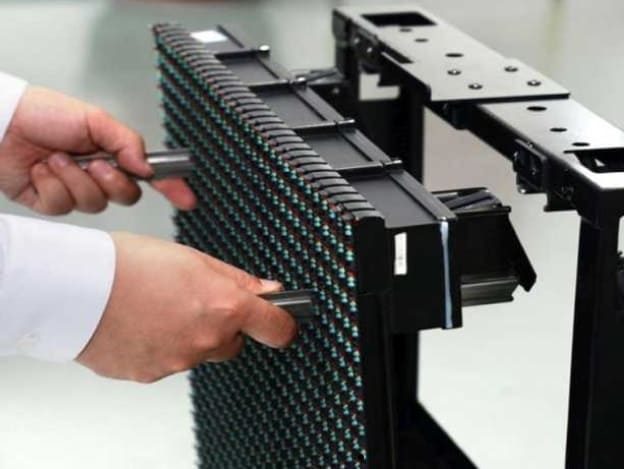
10. Cost
When it comes to cost, the video wall is definitely the ultimate winner. A video wall is a budget-friendly solution due to the maturity and adoption stage of LCD technology. LCD technology has existed for at least two decades and the manufacturing cost is pretty affordable nowadays.
On the other hand, LED screen is indeed more expensive than most digital displays in the market, including the video wall. However, businesses should focus on the return on investment. It is not the cost that defines the success of a campaign. It is the result that matters the most.
11. Which to Choose: LED Screen or Video Wall?
It is pretty easy to choose whether to invest in an LED screen or a video wall.
If you are looking at an outdoor application, choose an LED screen.
If you are looking for a superior viewing experience with higher brightness and more accurate colours, choose an LED screen.
If you have a limited budget, choose a video wall. However, although the upfront cost of a video wall is lower, the maintenance fee in the future could get pretty high if you are unlucky.
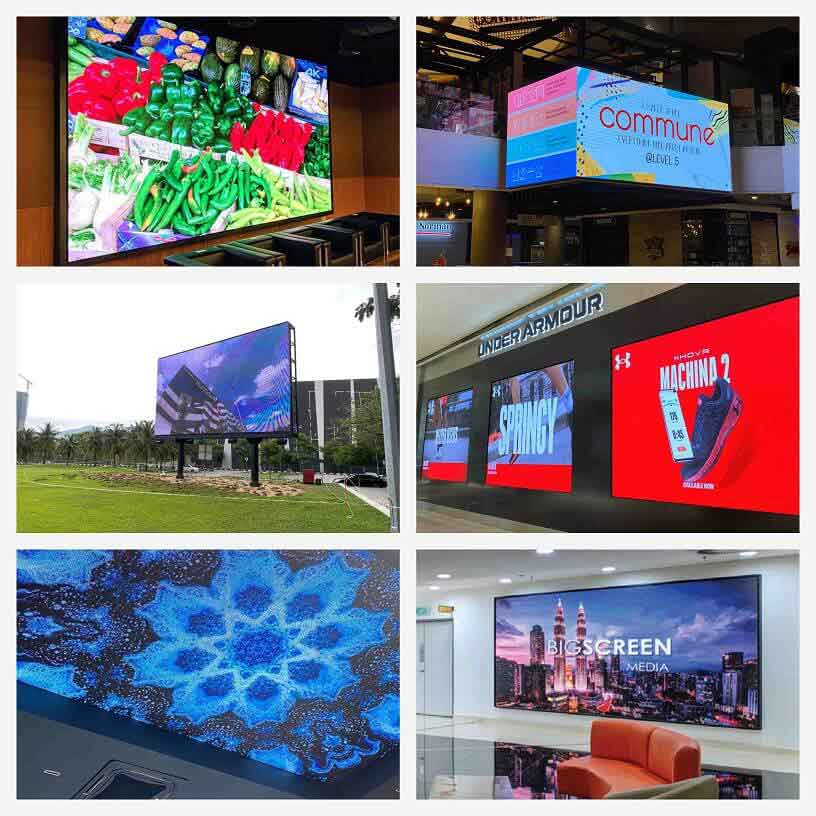
Conclusion
As a professional solution provider with years of experience, we understand that different businesses have different requirements and scenarios. While it seems LED screen is a clear winner and the only advantage of the video wall is its upfront cost, other factors can affect your choice of investment.
Feel free to talk to us, and we will suggest the most suitable solution that meets your needs.